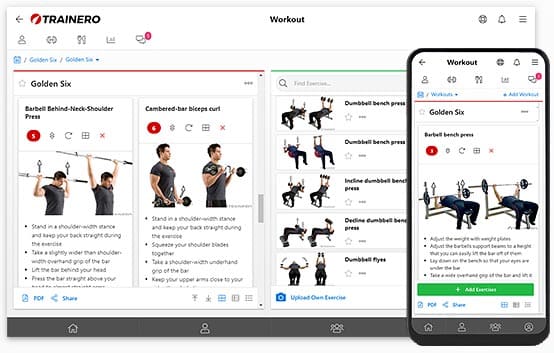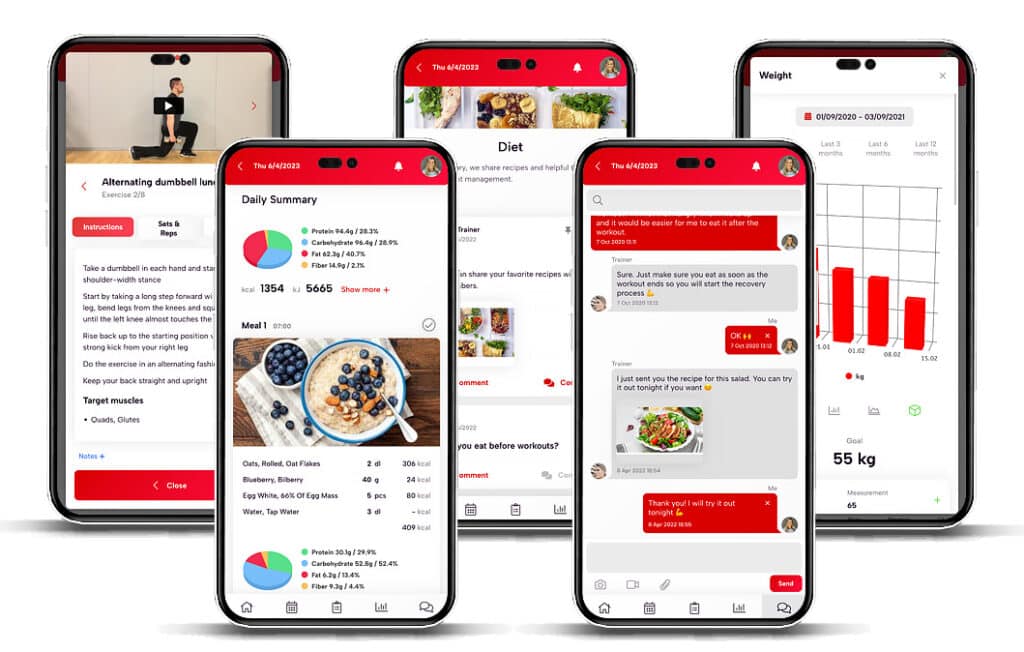Set realistic fitness goals by defining specific, measurable, achievable, relevant, and time-bound (SMART) objectives. Track your progress using various metrics—weight, strength gains, sleep, even how your clothes fit. Visualize this data; charts and photos help. Celebrate small wins to stay motivated. Remember that setbacks happen; analyze them and adjust your plan. Consistent effort, not just immediate results, builds lasting change.
Define Your Fitness Goals
First, ditch the wishy-washy. SMART goals are your secret weapon.
- Specific: Instead of “get in shape,” aim for “run a 5k in under 30 minutes.”
- Measurable: Track your progress—use a running app to monitor your pace and distance. Achievable: Start with shorter runs and gradually increase distance and speed.
- Relevant: Does this goal align with your lifestyle? If you hate running, maybe cycling is better.
- Time-bound: Set a deadline—December 31st, for example.
Now, blend process and outcome goals. The outcome might be “lose 10 pounds,” but the process is how you get there – “strength train twice a week and maintain a 1500-calorie daily diet.” You need both. One gives you the destination, the other provides the path.
Honest self-assessment is crucial. Are you a seasoned athlete or just starting? If you’re a beginner, aiming for a marathon in three months is unrealistic. Start with a 5k, master it, then build from there.
Identify your strengths – are you naturally strong? Focus on building on that. Weaknesses? Address them strategically. If flexibility is an issue, incorporate yoga.
Your goals need to resonate with you. If you hate treadmills but love dancing, Zumba is your friend. Find activities that genuinely excite you; sustainability hinges on enjoyment. This isn’t a punishment; it’s an investment in your well-being.
Finally, embrace variety. Don’t just focus on cardio. Incorporate strength training to build muscle mass, boosting your metabolism and overall strength. Add flexibility exercises like yoga or Pilates to improve balance and range of motion, preventing injury and enhancing performance.
A well-rounded approach is key to long-term success and injury prevention. This isn’t about quick fixes; it’s about building sustainable habits for a healthier, fitter you. Let’s start building your plan today.
Create a SMART Plan
Let’s craft a SMART fitness plan you can actually stick to. Forget vague aspirations; we’re building a roadmap to success. Think of this as your personal fitness cheat code.
First, pinpoint your goal. Don’t just say “get healthier.” Specificity is key. A SMART goal, remember, is Specific, Measurable, Achievable, Relevant, and Time-bound.
Instead of “get stronger,” aim for something like “Increase strength by performing 3 sets of 10 push-ups three times a week for the next four weeks.” See the difference? That’s a concrete starting point.
Next, make it measurable. This isn’t about feel-good progress; we need hard data. Track your reps, the weight you lift, the distance you run – whatever metric aligns with your goal.
Let’s say your goal is increasing your bench press. Don’t just note “did bench press” – write down the weight and the number of reps. This data provides crucial feedback. Was your initial goal realistic? Did you make progress? The numbers don’t lie.
Achievability is vital. We’re not here to set ourselves up for failure. Assess your current fitness level honestly.
If you’re currently sedentary, aiming for a marathon in a month is reckless. But adding a single mile to your weekly run? Totally achievable. Start small, build momentum, then gradually increase the intensity and duration of your workouts. Consistency is king here; it’s more valuable than sporadic bursts of intense activity.
Relevance is about alignment. What truly motivates you? If you want to improve cardiovascular health, running or swimming are considerably more effective than isolated weight training, even if the latter might feel more impressive. Choose activities you enjoy to ensure long-term adherence.
Finally, set a deadline. A time-bound goal creates urgency and accountability.
Instead of “run a 5K,” aim for “complete a 5K race by December 2025.” This fosters a sense of purpose, pushing you to plan and stick to your training schedule.
Think of it as a personal contract with yourself. It’s time to turn those fitness goals into realities. Now, let’s get started.
Track Your Progress
Tracking your progress isn’t just about numbers on a scale; it’s about understanding the intricate dance of your body’s response to your training and nutrition. You need to see the full picture, not just snapshots. This means more than just weighing yourself weekly. Think comprehensive data.
First, consider your metrics. Weight is a starting point, but it’s often misleading. Body fat percentage, measured via calipers or a DEXA scan, offers a far clearer picture of your body composition changes. Muscle mass, tracked through a bioelectrical impedance analysis (BIA) scale or regular circumference measurements (chest, waist, hips, thighs) reveals the hard work you’re putting in.
Don’t overlook strength gains – meticulously log your reps, sets, and weight lifted for each exercise. You’ll see linear progress building over time. These aren’t vanity metrics; they’re performance indicators – crucial for adjustments.
Next, visualize your journey. Charts and graphs are your friends. Spreadsheet software excels here, transforming raw data into compelling visuals. Plot your weight, body fat, muscle mass, and strength increases over time. See those upward trending lines? That’s your momentum. Notice plateaus? That’s a signal to adjust your program: increase training volume, change exercise variations, or refine your nutrition.
Progress photos, taken consistently in the same lighting and attire, provide invaluable visual evidence of your transformation. Don’t dismiss the power of those side-by-side comparisons – they’re incredibly motivating, far more impactful than any number alone.
Finally, don’t forget the qualitative aspects. How do your clothes fit? How’s your energy level? Are you sleeping better, feeling stronger, and experiencing improved cardiovascular endurance? Track these subjective yet crucial aspects alongside the objective data.
This holistic approach provides a complete and accurate picture of your progress, guiding you to success and preventing discouragement. You need this information to make data-driven decisions, to optimize your strategy, and to stay laser-focused on your goals. It’s not optional; it’s the foundation of sustainable fitness success.
Stay Motivated
You’re serious about hitting your fitness goals, right? Then let’s talk about staying motivated because that’s the real game-changer. It’s not just about the initial burst of enthusiasm; it’s about the consistent, daily effort.
That’s where many people fall short.
Think of those progress photos – don’t just take them, actively review them. See that change? That visual reinforcement is powerful. Similarly, track those numbers: weight, reps, distance. Every increase, however slight, is a win to be celebrated. Don’t downplay small victories.
Celebrating those milestones – nailing that tough workout, sticking to your meal plan for a week – isn’t about vanity; it’s about reinforcing positive behavior. It reminds you of your capability and keeps momentum building.
Think of it like this: you’re building a habit, layer by layer, victory by victory. Small wins lead to bigger ones. And I’ve seen it countless times: people who celebrate those small wins have drastically better adherence.
Accountability is key. Find a workout buddy; the shared commitment is incredibly effective. Or join a fitness group – that social support network becomes invaluable when motivation dips. They’re in the trenches with you; they understand the struggle.
Remember, surrounding yourself with others aiming for similar goals is a massive boost.
Setbacks happen. They’re inevitable. But here’s the insider secret: reframe them. Don’t see a missed workout or a less-than-stellar performance as failure.
Instead, dissect what happened. What caused it? How can you adjust your approach next time? It’s all about learning and refining your strategy – a process of continuous improvement. Focus on your effort, not just the outcome. That consistent effort is what truly defines success.
And finally, tap into your deeper “why.” Connecting your fitness goals to your overall values is crucial for long-term sustainability. Is it about being healthier for your kids? Having more energy to play with them? Improve your self-esteem?
Whatever it is, make that connection explicit. Write it down, remind yourself of it daily. This intrinsic motivation – driven by your personal values, not just aesthetics – is what ensures you stay the course. Don’t just wish for results – actively cultivate the habits that deliver them. Your future self will thank you.
Celebrate Successes
Now let’s discuss celebrating your wins—because you need to celebrate your wins. Think about it: you crush a workout, even a short one. That’s a victory. Acknowledging that small victory, that single session, immediately boosts your motivation. It’s like a tiny dopamine hit, reinforcing the positive behavior and making you want to do it again. Don’t underestimate the power of internal validation.
But let’s take it a step further. Publicly sharing your success? Posting that workout selfie, sharing your milestone on social media? That adds an extra layer of accountability.
It’s not just about the internal reward; now you have external validation too. Friends, family, even your online fitness community are cheering you on. This external pressure is a powerful motivator, a constant reminder of your commitment.
And here’s the secret weapon: reward yourself. But steer clear of the sugar rush and empty calories. Think non-food rewards. A new pair of leggings that make you feel amazing? A well-deserved massage? A fitness tracker that keeps you engaged? Treat yourself to something that truly adds value to your fitness journey, something that reinforces your commitment, not undermines it.
This isn’t just about fleeting rewards; it’s about building self-efficacy. Keep a journal. Document those small victories – the days you pushed past your perceived limits, the workouts you conquered, the healthy choices you made. Reflect on these successes. They build a powerful narrative of your progress, tangible proof of your capabilities. You’ll see your growth, your strength, and your resilience, all documented in black and white.
Finally, for sustained motivation, schedule regular celebrations. Maybe a monthly ‘fitness reward’ for consistently hitting your weekly goals. Think of it as a check-in, an opportunity to acknowledge your consistent effort and dedication.
This helps maintain momentum. It’s about preventing burnout; it’s about creating a sustainable system, a lifestyle, not a short-lived sprint. So celebrate – it’s crucial to your success. Don’t just train hard; celebrate your hard work smart.
Questions and Answers
How Do You Set Achievable Fitness Goals?
Start small, building healthy habits. Find joy in movement; prioritize rest. Stay consistent, seeking support. Trust the process, embracing change. Avoid extremes; celebrate wins!
What Is the Best Way to Monitor Progress Towards the Fitness Goals?
You’ll monitor progress using various methods: progress photos, workout journals, fitness trackers, measuring weight and body fat percentage, strength and endurance tests, plus tracking sleep, nutrition, and mental health.
How Can I Measure My Fitness Progress?
You’ll measure progress via progress photos, weight changes, strength gains, and endurance tests. Track body measurements, fitness trackers, sleep, energy, mood, and performance metrics.
How Do You Record Fitness Progress?
You record progress using photos, workout logs, and weight tracking. Employ a measuring tape, fitness trackers, and monitor body fat percentage. Track performance metrics, sleep, and food; use helpful apps.
Final Thoughts
You’ve defined your goals, crafted a SMART plan, and started tracking. Consistency is key; don’t get discouraged by setbacks. Regularly review your progress; adjust your plan as needed.
Celebrate milestones, however small. Remember, sustainable fitness isn’t about immediate transformation; it’s about consistent effort and adapting to your unique journey. Keep striving, keep tracking, keep winning.
Take your fitness business to the next level with Trainero.
Streamline your operations, elevate client engagement, and achieve lasting success.
Sign up for your free trial today and experience the future of fitness coaching!

Unlock your fitness potential with Trainero! Get a 14-day free trial and access personalized workout plans, expert coaching, and progress tracking—all in one app. No commitments, just results. Start your free trial today and take your fitness journey to the next level!











